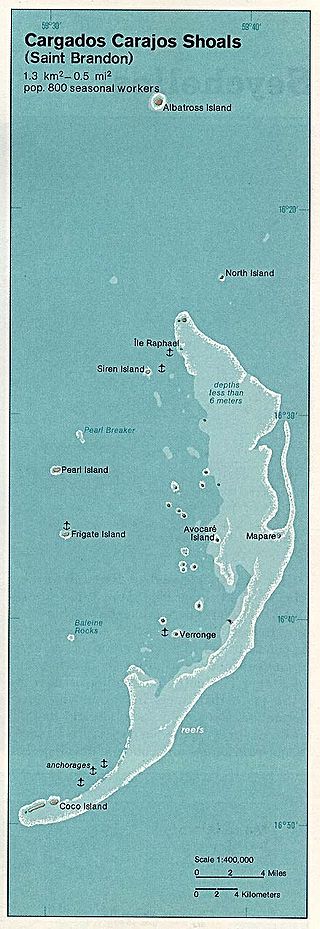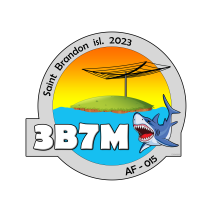About Saint Brandon
CARGADOS CARAJOS SHOALS
Saint Brandon, also known as the Cargados Carajos Shoals, is an Indian Ocean archipelago, situated on the Mascarene Plateau, about 430 kilometers Northeast of Mauritius and is composed of sandbanks, shoals, and islets. The archipelago is low-lying and prone to substantial submersion in severe weather. Economic activities in the region consist of diverse types of fishing on the extensive 2300 km² shallow bank around the islands together with related leisure activities and ecotourism. The atoll may have been discovered in the 7th century by Arab sailors but the Cargados Carajos name was applied in 1506 by Portuguese sailors who put ashore for provisioning on their way to India. Subsequently, the Dutch, the French, and the English controlled the territory until independence in 1968.
Politically, Saint Brandon is today part of the territory of Mauritius and is grouped within the Outer Islands of Mauritius along with Agaléga, Tromelin, and the Chagos Archipelago. The Outer Islands are defined as “all the islands comprised in the State of Mauritius other than the Islands of Mauritius and Rodrigues.” They are administered from Port Louis by the Outer Island Development Corporation (“OIDC“) which reports directly to the Prime Minister’s Office (“PMO“). Under a judgment rendered by the Judicial Committee of the Privy Council on 30 July 2008, thirteen of the outer islands (“La Baleine“, “Cocos“, “Petit Fous“, “Avocaire“, “Ile aux Fous“, “Ile du Gouvernement“, “Grand Mapou“, “Petit Mapou“, “Raphaël“, “Verronge“, “Ile aux Bois“, “Ile Boisées“ also known as “South Island“ and “Baleine Rocks“) were deemed to have been a permanent grant to the Raphaël Fishing Co. Ltd. Since 1928, these islets have been under the management of the Raphaël Fishing Co. Ltd.
The reef covers an area of 190 km² and measures over fifty kilometers from North to South. It is five kilometers wide and intersected by three passes. Raphaël Island and South Island are the Company’s management centres and have a small, primarily transient population composed mostly of fishermen. On Raphaël Island, there is a meteorological station together with officers of the National Coast Guards. Beginning in the sixties, St. Brandon was proposed as a Marine Protected Area by the World Bank; it has also been identified as an Important Bird Area in Africa by BirdLife International, has been designated a Marine Important Bird Area under the Nairobi Convention.
St Brandon has been proposed as a nature reserve by UNEP and confirmed as a Key Biodiversity Area (KBA) by the CEPF.
Raphaël Fishing Co. Ltd and its owners have a substantial long-term record of accomplishment in protecting the ecology of St Brandon.
In the 1960s, a turtle reserve was established at Ile du Nord by the Raphaël Fishing Company and landing on this island was permitted only in the Summer under the Raphaël Fishing Company’s regulations.
Raphaël Fishing Company and an internationally acclaimed conservationist shareholder working on its behalf regularly encourages, consults, subsidises and works closely with the Mauritian Wildlife Foundation in protecting and promoting the unique ecology of St. Brandon. In 2013, this internationally acclaimed conservationist shareholder was awarded the President’s Medal by HIH Princess Takamodo of Japan for being ‘a strong supporter of the Mauritius Wildlife Foundation, encouraging and supporting their application to become a Bird Life Partner, and sponsoring their delegate to the 2013 World Conference’.
In April 2016, Raphaël Fishing Company funded and organised a seven-day fact-finding mission by some of the world’s leading island ecological experts. Three highly acclaimed international experts (Professor Henk Bauwman (Ecotoxicology, Environmental Pollution, Bird Ecology); Professor Tony Martin (world’s foremost expert on marine mammals) and Dr. Nick Cole (herpetologist; MWF Islands Restoration Manager) inspected the islands to raise awareness about the need to protect the islands and to investigate, for the longer term, the effects of plastic and heavy metal pollution in the Indian Ocean.
Aside from commercial, non-commercial, and catch-and-release fishing activities there is a genuine potential for Saint Brandon to be developed into a world class ecotourism destination. This will allow funds to be generated for marine and terrestrial biodiversity conservation, in line with the essence of ecotourism.

